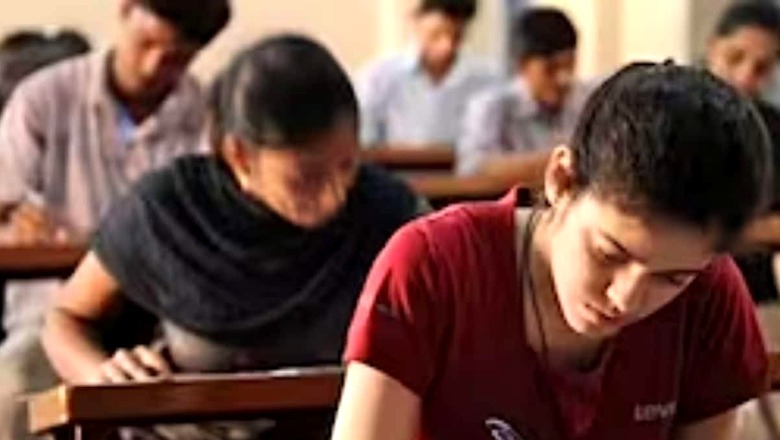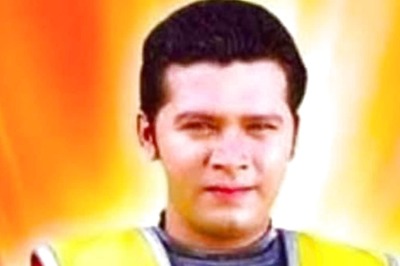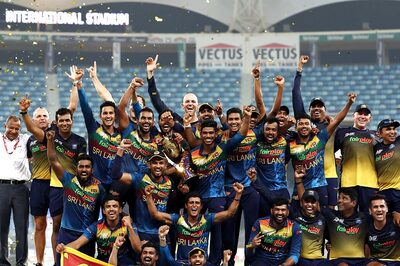
views
Engineering aspirants far outnumber the medical aspirants trooping to Kota each year. The latter, however, account for more casualties in the recent spate of student suicides in India’s coaching hub.
With limited seats and a long journey to complete the course, it’s only a few who make the cut while “fear of failure” and “losing a year”, among other factors, pushes many of these young minds to the brink, said practising doctors and experts.
Dr Lakshay Mittal, a Kota product himself, says life in the city of coaching is not easy and, contrary to what’s prevalent, parents have to be the constant mental health support for students.
“I myself had started feeling low and dejected during the initial months of joining the batch, as I had not made it to the top 100 scorers in the exam at the coaching institute upon joining. It was my parents and a few seniors who helped me and I somehow got out of that low phase. My mother came down and stayed with me for some time. It took me six months to make it to the top 100, but I kept the patience and consistency in studies only because I had my parents’ support, which is often missing in the case of most other students,” says Mittal, who is currently preparing for MS and is also the national president of United Doctors Front Association (UDFA).
He said the pressure on students preparing for the National Eligibility cum Entrance Test (NEET) students is higher, both in terms of course content as well as the competition, which cannot be compared to engineering courses as the latter has higher number of seats across colleges. NEET aspirants are more worried about losing a year as they feel time is running out.
Mittal, who came down to Kota in 2013 after completing Class 12, took the medical entrance exam the same year as well as in 2014 when he cracked it. There are two sets of students in Kota – those who arrive after Class 10 and those who arrive after Class 12 and take a drop year.
“Those coming after Class 12 … if they are not able to perform well initially, which is true for more than half of the class, feel that they will lose a year if they don’t make the cut the same year. Those who come right after Class 10 are too young to get into the grind and if they are not performing well, there are some who feel pushed to take the extreme step,” Mittal says, adding that there can be a number of interlinking factors in between, especially for those coming from low-income families, but the core remains the same – lack of support.
Around 21.5 lakh students appear for the NEET exam every year for around 1 lakh seats. To be specific, there are 1,075,83 MBBS seats, of which 56,068 are in government and semi-government institutions and 51,515 in private/deemed medical colleges across India. Of these, 20 lakh-plus students who sit for the exam, only around 2-2.5 lakh are able to clear it.
“Only those who actually feel they are ready for a long duration of study without earning for that period and have the zeal for it must get into the preparation. It is mainly the parents’ role to try to understand if their child has the aptitude and the interest for the same. There needs to be acceptance among parents of the real aptitude of their children and if they are not coping well, they must take note of the warning signs,” says Dr Mittal.
The first two weeks of September saw two more student suicides at the coaching hub in Rajasthan, taking the toll to 25 this year, so far. While one incident was reported on September 13, another took place on the night of September 18. The students who took the extreme step were medical aspirants preparing for NEET.
On August 27, two other teens preparing for NEET died the same day in two separate incidents within six hours of writing their weekly tests at the coaching institute. The district administration then asked coaching institutes in the city to not hold any weekly tests or exams for the next two months.
So far this year, Kota has witnessed 25 student suicides, the highest since 2015 when the district administration started collecting data on such incidents.
As per state police records in 2022, 15 students died of suicide. No suicides were reported in 2021 and 2020, which were the Covid-19 pandemic years when institutes were shut and mostly ran classes online. In 2019, 18 such deaths were reported, 20 in 2018, seven in 2017, 17 in 2016 and 18 in 2015.
A faculty member at one of the coaching institutes in Kota says that though there are counselling services available at every step, in many cases, parents are not ready to accept that there might be an issue with their child not wanting to pursue their studies here.
“When we notice a student missing classes, we inform the parents. Many times it has been seen that students want to go back home leaving the course midway and some might even be contemplating suicide, but parents are not ready to let them return. They just feel that it’s some academic pressure which their children would be able to overcome over time, leaving them on their own,” adds the faculty member, who didn’t wish to be named.
Dr Rohan Krishnan, who is with a top central government hospital, says preparation for the medical entrances cannot be compared with engineering. The first deals with human lives and requires much more rigour and patience.
“What is happening in Kota requires major government intervention with solid steps to contain the current situation. Firstly, students must complete school while they may take additional coaching. But quitting school and just enrolling in a coaching institute may not be the right environment for the holistic growth of a child,” says Krishnan.
And the biggest role here is that of the parents who need to understand what their child is best in instead of just forcing them to take up medical preparation while they may be meant for other professions, he adds.
While the number of seats in government colleges has increased over the past decade, it is majorly the affordability of medical education in the country that needs to be standardised. “Again, the government has to control the fee charged by private medical colleges and ensure quality at the same time. The commercialisation of education across sectors and, in particular, medical schools needs to be controlled to a large extent,” says Dr Krishnan.


















Comments
0 comment